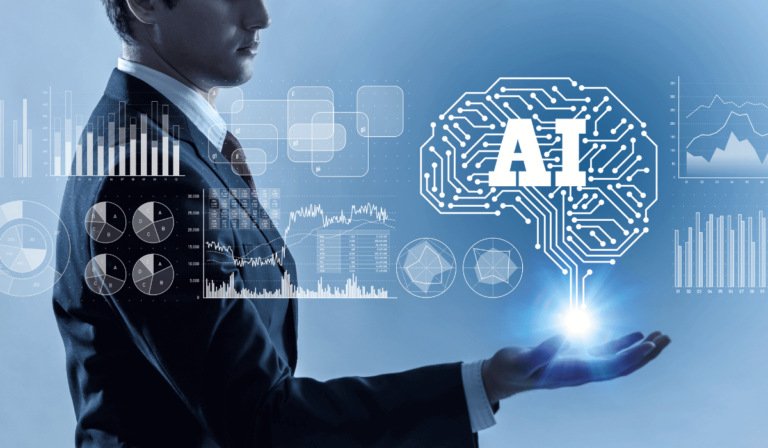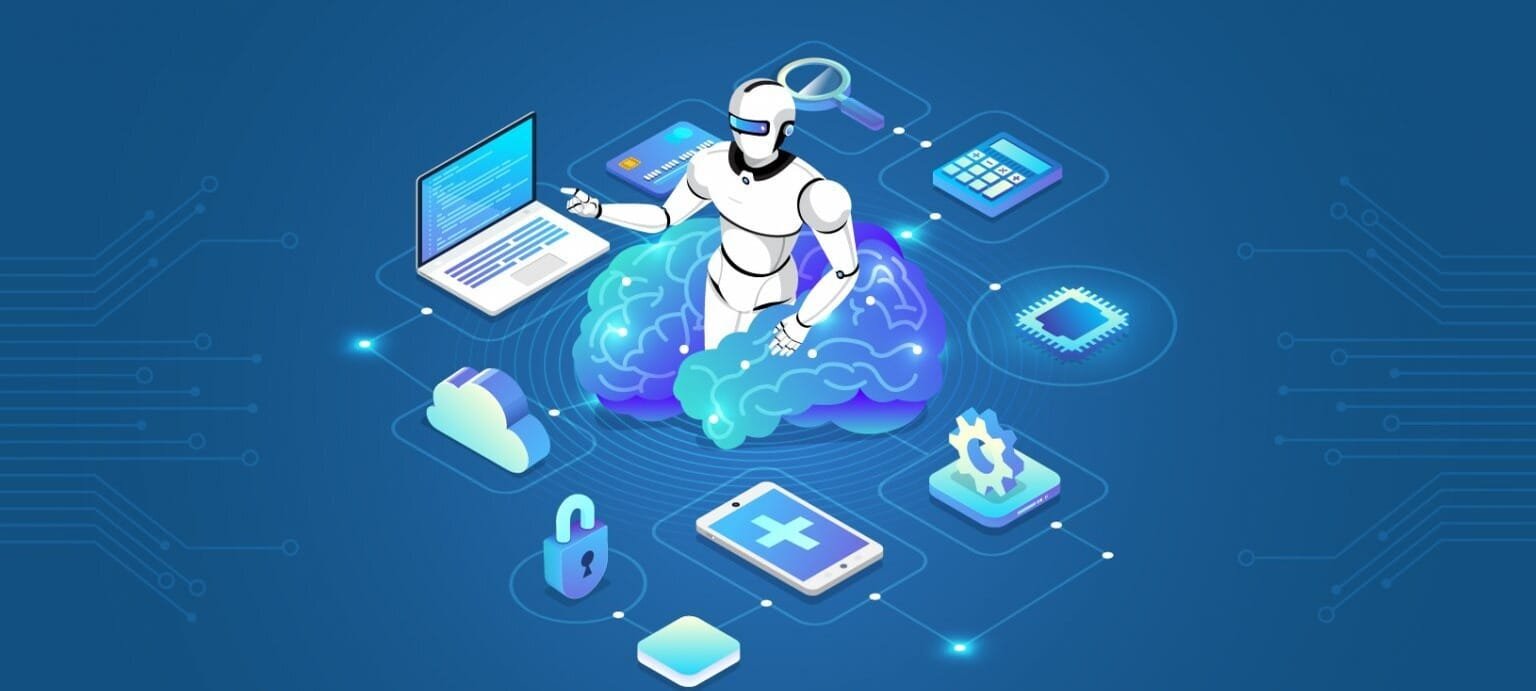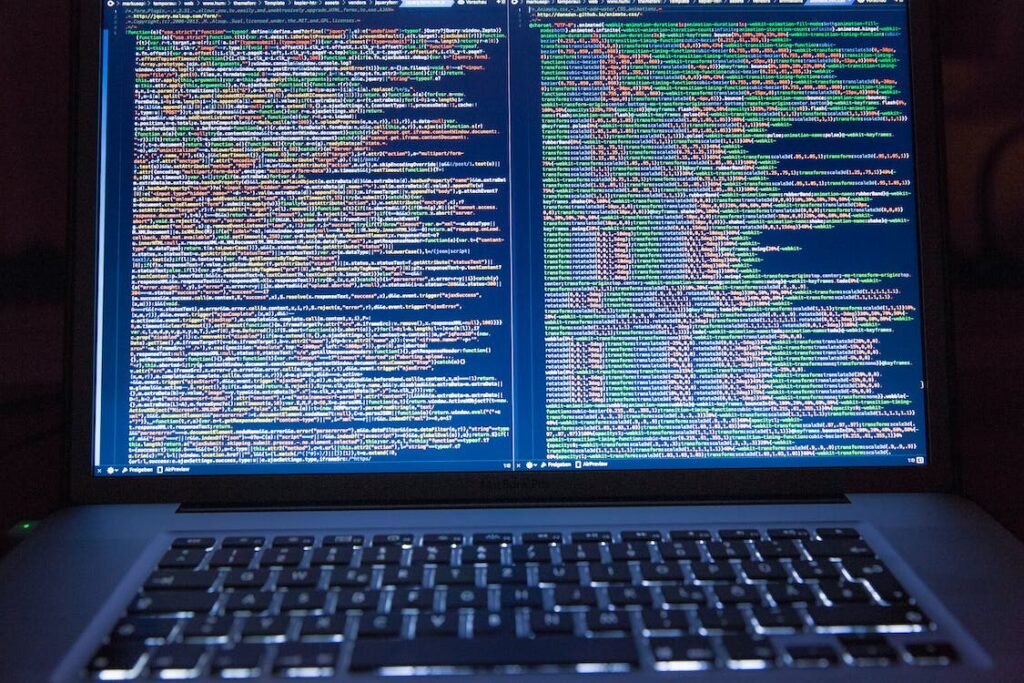In today’s world, security and insights are more important than ever. With the rise of digital technology, AI video analytics has become a game-changer for businesses and organizations. AI video analytics uses artificial intelligence to analyze video footage in real-time or from recordings, offering numerous benefits in security, operations, and business insights. This article explores how AI video analytics enhances security and provides valuable insights to improve business operations.
Understanding AI Video Analytics
AI video analytics involves using algorithms to process and analyze video footage.
Unlike traditional video surveillance systems that rely on human monitoring, AI can automatically detect and respond to specific events. This makes it more efficient and effective.
How AI Video Analytics Works
AI video analytics systems are designed to recognize patterns, objects, and behaviors in video footage. These systems use machine learning to learn from data and improve over time.
They can identify objects like cars, people, or animals and can detect unusual behavior, such as loitering or trespassing.
The Evolution of Video Analytics
Traditional video surveillance required constant human monitoring, which was time-consuming and prone to errors. AI video analytics automates this process, providing real-time alerts and detailed analysis.
This evolution has transformed security and operational efficiency.
Enhancing Security with AI Video Analytics
One of the most significant benefits of AI video analytics is its ability to enhance security. By providing real-time alerts and detailed analysis, AI helps organizations prevent incidents and respond quickly when they occur.
Real-Time Monitoring and Alerts
AI video analytics can monitor video feeds in real-time and alert security personnel to potential threats. For example, if the system detects someone entering a restricted area, it can send an alert immediately.
This allows for quick response and can prevent incidents before they escalate.
Improved Incident Response
AI video analytics not only detects incidents but also provides detailed information that helps in response. For instance, if a suspicious package is left unattended, the system can track the movements of the person who left it.
This information is crucial for security personnel to respond effectively.
Crime Prevention
By analyzing patterns and behaviors, AI video analytics can help prevent crimes. For example, the system can detect unusual loitering or suspicious behavior and alert security before a crime is committed.
This proactive approach is more effective than traditional reactive measures.
Beyond Security: Business Insights
AI video analytics isn’t just for security. It also provides valuable insights that can improve business operations and customer experience.
Customer Behavior Analysis
AI can analyze customer behavior in retail environments, providing insights into shopping patterns.
For example, it can track how customers move through a store, which products they look at, and how long they spend in different areas. This information helps retailers optimize store layouts and product placement.
Operational Efficiency
AI video analytics can improve operational efficiency by monitoring processes and identifying bottlenecks.
For example, in a manufacturing setting, AI can monitor production lines to detect inefficiencies or potential issues. This allows for timely interventions and improves overall productivity.
Employee Performance and Safety
AI video analytics can also be used to monitor employee performance and ensure safety. For instance, it can detect if employees are following safety protocols or if there are any unsafe behaviors.
This helps in maintaining a safe working environment and improving overall performance.
Integrating AI Video Analytics into Your Business
Integrating AI video analytics into your business involves several steps, from selecting the right system to training your staff.
Choosing the Right System
The first step is to choose an AI video analytics system that meets your needs. Consider factors like the size of your premises, the type of footage you need to analyze, and your specific security or operational requirements.
Look for systems that offer features like real-time alerts, detailed analytics, and easy integration with your existing systems.
Implementation and Training
Once you have chosen a system, the next step is implementation. This involves installing cameras and setting up the software. It’s important to train your staff on how to use the system effectively.
This includes understanding how to respond to alerts and how to interpret the data provided by the system.
Continuous Improvement
AI video analytics systems improve over time as they learn from data. It’s important to regularly review and update the system to ensure it continues to meet your needs.
This includes updating the software, adding new features, and retraining staff as needed.
Success Stories with AI Video Analytics
To understand the practical benefits of AI video analytics, let’s explore a few real-world case studies where businesses and organizations have successfully implemented these systems to enhance security and gain valuable insights.
Retail: Enhancing Customer Experience and Reducing Theft
A large retail chain implemented AI video analytics to improve customer experience and reduce theft. By analyzing video footage, the system identified patterns in customer behavior, helping the store optimize product placement and layout.
The system also detected suspicious activities, leading to a significant reduction in shoplifting incidents. As a result, the store saw an increase in sales and a decrease in losses due to theft.
Manufacturing: Improving Operational Efficiency
A manufacturing company integrated AI video analytics into their production lines to monitor operations and ensure safety. The system detected inefficiencies, such as machinery downtime and bottlenecks, and provided real-time alerts to the management team.
This allowed for quick interventions, reducing downtime and improving overall productivity. Additionally, the system monitored employee adherence to safety protocols, leading to a safer work environment and fewer accidents.
Transportation: Enhancing Public Safety
A city transportation department used AI video analytics to enhance public safety in its subway system. The system monitored video feeds from various stations and detected unusual behavior, such as loitering or unauthorized access to restricted areas.
Real-time alerts enabled security personnel to respond quickly to potential threats, improving passenger safety. The system also provided insights into passenger flow, helping the department optimize train schedules and reduce overcrowding.
Future Trends in AI Video Analytics

As technology continues to evolve, AI video analytics will become even more advanced and widely adopted. Here are some future trends to watch for:
Integration with IoT
The integration of AI video analytics with the Internet of Things (IoT) will provide even more comprehensive insights.
IoT devices, such as sensors and smart cameras, can collect vast amounts of data that AI systems can analyze to provide real-time alerts and detailed reports. This integration will enhance security and operational efficiency across various industries.
Advanced Behavioral Analysis
Future AI video analytics systems will be capable of more advanced behavioral analysis. These systems will not only detect specific actions but also understand the context and intent behind them.
For example, an AI system could distinguish between a person walking casually and someone moving suspiciously, providing more accurate and actionable insights.
Increased Use in Public Spaces
AI video analytics will see increased use in public spaces such as airports, stadiums, and city centers. These systems will enhance public safety by monitoring large crowds and detecting potential threats.
They will also provide valuable insights into crowd behavior and movement, helping authorities manage events and emergencies more effectively.
Enhanced Data Privacy
As AI video analytics becomes more prevalent, there will be a greater focus on data privacy and security. Future systems will incorporate advanced encryption and anonymization techniques to protect individuals’ privacy while still providing valuable insights.
Regulatory frameworks will also evolve to ensure the responsible use of AI video analytics.
Overcoming Challenges in AI Video Analytics
While AI video analytics offers numerous benefits, there are also challenges that businesses need to address to successfully implement these systems.
Data Privacy Concerns
One of the main challenges is ensuring data privacy. AI video analytics systems collect and analyze large amounts of video footage, which can raise privacy concerns.
Businesses must implement robust data protection measures and comply with regulations to address these concerns.
High Initial Costs
The initial cost of implementing AI video analytics can be high, especially for small businesses.
This includes the cost of hardware, software, and training. However, the long-term benefits, such as improved security and operational efficiency, often outweigh the initial investment.
Technical Expertise
Implementing AI video analytics requires technical expertise. Businesses need to have skilled personnel who can set up and maintain the system.
This includes understanding how to configure the software, interpret the data, and respond to alerts.
Integration with Existing Systems
Integrating AI video analytics with existing security and operational systems can be challenging.
Businesses need to ensure that the new system is compatible with their current infrastructure and that data flows seamlessly between systems.
Best Practices for Implementing AI Video Analytics
To successfully implement AI video analytics, businesses should follow best practices to maximize the benefits and overcome challenges.
Start with Clear Objectives
Before implementing AI video analytics, businesses should define clear objectives. This includes identifying the specific problems they want to solve and the goals they want to achieve.
Clear objectives help guide the implementation process and ensure that the system meets the business’s needs.
Choose the Right Vendor
Choosing the right vendor is crucial for the successful implementation of AI video analytics. Businesses should look for vendors with a proven track record and experience in their industry.
It’s also important to choose a vendor that offers good customer support and training.
Train Your Staff
Proper training is essential for the effective use of AI video analytics. Businesses should train their staff on how to use the system, interpret the data, and respond to alerts.
Continuous training is also important to keep staff updated on new features and best practices.
Regularly Review and Update the System
AI video analytics systems need regular review and updates to ensure they continue to meet the business’s needs. This includes updating the software, adding new features, and retraining staff as needed.
Regular reviews help identify any issues and ensure the system is functioning optimally.
AI Video Analytics in Different Industries

AI video analytics has diverse applications across various industries, each benefiting uniquely from this technology. Let’s explore how different sectors are leveraging AI video analytics to enhance their operations and security.
Retail Industry
The retail industry benefits significantly from AI video analytics by improving store operations, customer experience, and security.
Enhancing Customer Experience
Retailers use AI video analytics to understand customer behavior and preferences. By analyzing video footage, retailers can determine which areas of the store attract the most customers, how long they stay in certain sections, and which products catch their attention.
This data helps retailers optimize store layouts and product placements, ultimately enhancing the customer shopping experience.
Reducing Shrinkage
Shrinkage, due to theft or operational errors, is a major concern for retailers. AI video analytics can detect suspicious activities such as shoplifting or employee theft.
Real-time alerts enable security personnel to respond promptly, reducing losses and improving overall store security.
Manufacturing Industry
In manufacturing, AI video analytics is used to enhance production efficiency, ensure safety, and improve quality control.
Monitoring Production Lines
AI video analytics can monitor production lines to identify inefficiencies and potential issues.
For instance, it can detect machinery malfunctions or bottlenecks, allowing for timely interventions that minimize downtime and improve productivity.
Ensuring Worker Safety
Safety is a top priority in manufacturing. AI video analytics can monitor employee behavior to ensure compliance with safety protocols. For example, it can detect if workers are wearing the required safety gear or if they are entering hazardous areas.
This proactive monitoring helps prevent accidents and maintain a safer work environment.
Quality Control
AI video analytics can also be used for quality control by inspecting products in real-time. The system can identify defects or inconsistencies that may not be visible to the human eye, ensuring that only high-quality products reach the market.
Healthcare Industry
In healthcare, AI video analytics improves patient care, ensures safety, and enhances operational efficiency.
Monitoring Patient Behavior
AI video analytics can monitor patient behavior to detect signs of distress or unusual activity. For example, in a hospital setting, the system can alert staff if a patient falls or shows signs of agitation.
This immediate response capability improves patient safety and care.
Enhancing Operational Efficiency
Hospitals and clinics can use AI video analytics to streamline operations. For example, the system can monitor foot traffic to optimize staff deployment and reduce waiting times.
This leads to a more efficient and patient-friendly environment.
Ensuring Compliance
Healthcare facilities must comply with strict regulations. AI video analytics can monitor for compliance with hygiene and safety protocols, such as proper handwashing techniques or the use of protective equipment.
This helps maintain high standards of care and reduces the risk of regulatory violations.
Transportation Industry
The transportation industry leverages AI video analytics to enhance safety, optimize operations, and improve passenger experience.
Enhancing Public Safety
AI video analytics can monitor public transportation systems to detect suspicious behavior and potential threats. For example, the system can alert authorities to unattended bags or individuals acting suspiciously.
This enhances security and ensures the safety of passengers.
Optimizing Operations
Transportation agencies can use AI video analytics to monitor traffic patterns and passenger flow. This data helps optimize schedules and routes, reducing congestion and improving the efficiency of transportation services.
Improving Passenger Experience
AI video analytics can also enhance the passenger experience by monitoring service quality. For example, the system can track the cleanliness of vehicles and stations or monitor the performance of staff.
This ensures a high standard of service and improves passenger satisfaction.
Education Sector
In education, AI video analytics is used to enhance security, monitor student behavior, and improve teaching methods.
Ensuring Campus Security
AI video analytics can monitor school campuses to detect unauthorized access or suspicious behavior. Real-time alerts enable security personnel to respond quickly, ensuring the safety of students and staff.
Monitoring Student Behavior
Schools can use AI video analytics to monitor student behavior and identify issues such as bullying or absenteeism. This proactive monitoring helps create a safer and more supportive learning environment.
Enhancing Teaching Methods
AI video analytics can analyze classroom interactions to provide insights into student engagement and teaching effectiveness. For example, the system can track which parts of a lesson capture student attention or identify patterns in classroom participation.
This data helps teachers refine their methods and improve learning outcomes.
Overcoming Barriers to Adoption
While AI video analytics offers numerous benefits, there are barriers to adoption that businesses need to address to fully leverage this technology.
Addressing Privacy Concerns
One of the primary barriers is addressing privacy concerns. AI video analytics involves the collection and analysis of video footage, which can raise issues related to data privacy and surveillance.
Businesses must ensure that they comply with data protection regulations and implement measures to protect individuals’ privacy. This includes anonymizing data, securing footage, and being transparent about how the data is used.
Managing Costs
The initial cost of implementing AI video analytics can be high, especially for small businesses. This includes the cost of cameras, software, and training.
However, businesses can start with a pilot project to demonstrate the value of the technology and justify the investment. Additionally, as technology advances, the cost of AI video analytics is expected to decrease, making it more accessible.
Ensuring Technical Expertise
Implementing AI video analytics requires technical expertise. Businesses need to have skilled personnel who can set up, maintain, and optimize the system.
This includes understanding how to configure the software, interpret the data, and respond to alerts. Investing in training and working with experienced vendors can help businesses overcome this barrier.
Integration with Existing Systems
Integrating AI video analytics with existing security and operational systems can be challenging. Businesses need to ensure that the new system is compatible with their current infrastructure and that data flows seamlessly between systems.
Working with technology partners who have experience in system integration can help address this challenge.
Maximizing the Benefits of AI Video Analytics

To truly maximize the benefits of AI video analytics, businesses need to adopt a strategic approach that leverages the full potential of these systems. Here are some strategies to consider.
Integrate AI Across Multiple Departments
AI video analytics should not be limited to the security department alone. Its capabilities can benefit various departments, such as operations, marketing, and customer service.
For example, the marketing team can use AI insights to understand customer behavior and preferences, while the operations team can monitor and optimize workflow efficiency.
Utilize Data for Continuous Improvement
The data generated by AI video analytics is a valuable resource for continuous improvement. Businesses should regularly analyze this data to identify trends, uncover insights, and make data-driven decisions.
This process of continuous improvement helps businesses stay agile and responsive to changing conditions.
Foster a Culture of Innovation
Implementing AI video analytics should be part of a broader strategy to foster a culture of innovation within the organization. Encourage employees to embrace new technologies and provide them with the tools and training they need to succeed.
This culture of innovation will help businesses stay competitive and leverage AI to its full potential.
Collaborate with Technology Partners
Collaboration with technology partners can enhance the implementation and effectiveness of AI video analytics. Technology partners can provide expertise, support, and additional resources to ensure successful deployment.
They can also help businesses stay updated on the latest advancements and best practices in AI video analytics.
Monitor Legal and Ethical Considerations
As AI video analytics becomes more prevalent, it is crucial to monitor legal and ethical considerations. Businesses must ensure compliance with data privacy laws and regulations, such as the General Data Protection Regulation (GDPR).
Additionally, ethical considerations should guide the use of AI, ensuring that it is used responsibly and fairly.
Future Opportunities in AI Video Analytics
The future of AI video analytics holds many exciting opportunities. As technology continues to advance, businesses can expect even greater capabilities and benefits.
Enhanced Predictive Analytics
Future advancements in AI will enhance predictive analytics capabilities. This will allow businesses to predict potential issues before they occur and take proactive measures.
For example, AI could predict equipment failures in manufacturing or identify potential security threats in public spaces.
Greater Personalization
AI video analytics will enable greater personalization in customer interactions. For example, retail stores could use AI to analyze customer behavior and provide personalized shopping experiences.
This level of personalization will improve customer satisfaction and loyalty.
Expansion into New Industries
AI video analytics will expand into new industries, offering benefits across various sectors.
For example, in healthcare, AI could analyze patient behavior to improve care and safety. In education, AI could monitor student engagement and provide insights to enhance learning experiences.
Integration with Advanced Technologies
AI video analytics will integrate with other advanced technologies, such as augmented reality (AR) and virtual reality (VR). This integration will create new opportunities for immersive experiences and innovative applications.
For example, AI and AR could enhance training programs by providing real-time feedback in a simulated environment.
Wrapping it up
AI video analytics is transforming security and operational efficiency across numerous industries, offering real-time monitoring, enhanced insights, and improved decision-making. From retail and manufacturing to healthcare and smart cities, businesses are leveraging this technology to enhance customer experiences, optimize processes, and ensure safety.
While challenges like privacy concerns and high initial costs exist, the benefits of AI video analytics far outweigh these hurdles. As technology advances, its potential applications and benefits will continue to grow, making it an essential tool for businesses aiming to stay competitive and innovative. Embracing AI video analytics is crucial for driving continuous improvement and achieving new levels of success.
READ NEXT:
- Marketing Strategies for Financial Services
- How to Engage Your Community Through Marketing
- Effective Marketing Strategies for Medical Practices
- Top Marketing Strategies for Real Estate Success
- Campaign Strategies with AI for Marketing Analytics






















Comments are closed.